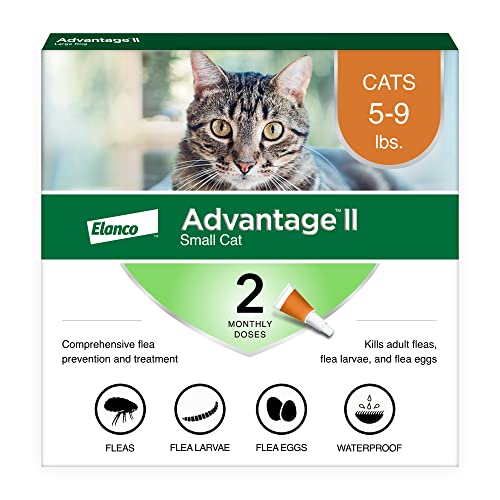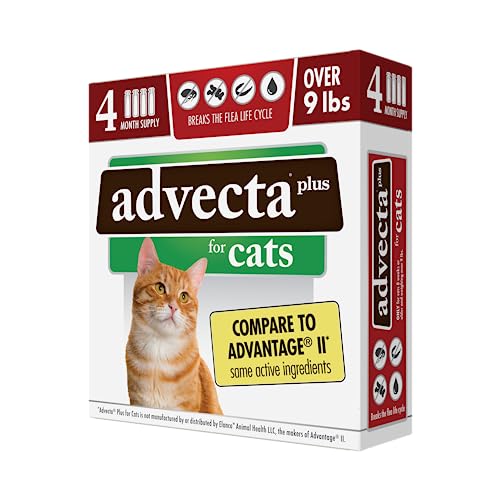Introduction
Fleas are not just a nuisance for cats; they can pose serious health risks to both feline companions and their human households. Cat flea infestations can lead to discomfort, skin irritation, allergic reactions, and even transmit diseases. As responsible pet owners, it's crucial to address flea infestations promptly and effectively.
Fortunately, there's a wide range of flea treatments available on the market today. From topical solutions and oral medications to natural remedies and environmental controls, pet owners have various options to choose from. Each type of treatment comes with its own benefits and considerations, making the decision-making process sometimes overwhelming.
The purpose of this article is to provide a comprehensive overview of cat flea treatments. By exploring the different types of treatments, their mechanisms of action, safety considerations, and effectiveness, readers will gain a deeper understanding of how to combat flea infestations and ensure the well-being of their beloved feline friends. Whether you're a seasoned cat owner or a new pet parent, this guide aims to equip you with the knowledge needed to make informed decisions about flea control for your furry companions.
Understanding Cat Fleas
Biology and Lifecycle of Cat Fleas
Cat fleas, scientifically known as Ctenocephalides felis, are small, wingless insects that feed on the blood of mammals, primarily cats. Understanding their lifecycle is crucial for effective flea control. Cat fleas undergo four main stages in their lifecycle:
Egg: Flea eggs are typically laid on the host animal but can also be found in the surrounding environment. They are tiny, white, and barely visible to the naked eye.
Larva: Flea larvae hatch from eggs and are worm-like with a translucent appearance. They feed on organic debris and flea feces found in the environment.
Pupa: Larvae eventually spin cocoons and enter the pupal stage. Inside the cocoon, they undergo metamorphosis into adult fleas. Pupae are resilient and can remain dormant for weeks or even months.
Adult: Once mature, adult fleas emerge from their cocoons and seek a host for blood meals. They are adept at jumping onto passing animals, including cats and humans, to feed and reproduce.
Common Signs of Cat Flea Infestations
Recognizing the signs of a flea infestation is essential for early intervention. Common indicators that your cat may have fleas include:
Excessive Scratching: Cats infested with fleas often exhibit intense scratching, particularly around the head, neck, and base of the tail.
Flea Dirt: Flea feces, also known as flea dirt, may appear as small black specks on your cat's fur, resembling grains of pepper. When moistened, flea dirt will turn reddish-brown due to the presence of digested blood.
Hair Loss and Skin Irritation: Flea bites can cause allergic reactions in some cats, leading to hair loss, inflamed skin, and the formation of hot spots.
Restlessness and Agitation: Cats suffering from flea infestations may become restless, irritable, or lethargic due to discomfort.
Health Risks Associated with Cat Fleas for Both Cats and Humans
Cat fleas pose health risks not only to feline companions but also to humans living in infested environments. Some potential health concerns include:
Skin Infections: Flea bites can cause skin irritation and secondary infections, especially in cats with allergic dermatitis.
Anemia: Severe flea infestations can lead to blood loss, resulting in anemia, particularly in kittens or debilitated cats.
Transmission of Diseases: Fleas can transmit various pathogens, including tapeworms, Bartonella (cat scratch disease), and certain types of bacteria, posing risks to both cats and humans.
Allergic Reactions: Some cats may develop flea allergy dermatitis (FAD), an allergic reaction to flea saliva, characterized by intense itching, hair loss, and skin inflammation.
Understanding the biology, signs, and health risks associated with cat fleas is essential for implementing effective flea control measures and safeguarding the health and well-being of both feline companions and their human households.
Conventional Flea Treatments
Topical Treatments
Topical flea treatments, also known as spot-on treatments, are applied directly to the skin of cats, usually between the shoulder blades or along the back. These treatments typically come in the form of liquid solutions or spot-on applicators. Here's how they work:
Mechanism of Action: Topical flea treatments contain active ingredients such as imidacloprid, fipronil, or selamectin, which are absorbed through the skin and spread throughout the cat's body via the sebaceous glands. These ingredients target and kill adult fleas upon contact, disrupting the flea's nervous system or reproductive cycle.
Popular Brands and Effectiveness: Some popular brands of topical flea treatments for cats include Advantage, Frontline, and Revolution. These products are widely used and often praised for their effectiveness in killing fleas and preventing reinfestation. However, efficacy may vary depending on factors such as flea resistance and environmental conditions.
Oral Medications
Oral flea medications are administered to cats orally, either as tablets, chewables, or liquids. These medications contain insecticides or insect growth regulators that kill fleas when ingested. Here's an overview:
Types of Oral Flea Medications: There are two main types of oral flea medications for cats:
Systemic Insecticides: These medications contain ingredients such as nitenpyram or spinosad, which circulate in the cat's bloodstream and kill fleas when they bite.
Insect Growth Regulators (IGRs): IGRs like lufenuron or methoprene inhibit the development of flea eggs and larvae, preventing the reproduction and growth of the flea population.
Benefits and Drawbacks: Oral flea medications are convenient and easy to administer, making them suitable for cats who are difficult to treat with topical solutions. They provide systemic protection against fleas and may offer longer-lasting effects than topical treatments. However, some cats may dislike the taste of oral medications, and certain medications may have potential side effects or interactions with other medications.
Flea Collars
Flea collars are worn around the neck of cats and release active ingredients that repel or kill fleas. Here's how they work:
Mechanism of Action: Flea collars contain insecticidal compounds such as imidacloprid, flumethrin, or deltamethrin, which are gradually released onto the cat's fur and skin. These ingredients repel adult fleas and may also kill them upon contact.
Efficacy and Safety Considerations: Flea collars vary in effectiveness depending on the active ingredients and their concentration. Some collars offer protection against fleas for several months, while others may need to be replaced more frequently. Safety considerations include ensuring the collar is appropriately sized and not too tight, monitoring for signs of skin irritation or allergic reactions, and following manufacturer instructions for proper use.
Conventional flea treatments such as topical solutions, oral medications, and flea collars offer effective options for controlling flea infestations in cats. Understanding how these treatments work and considering their efficacy and safety considerations can help pet owners make informed decisions about flea control for their feline companions.
Natural and Alternative Flea Treatments
Essential Oils and Herbal Remedies
Essential oils and herbal remedies have gained popularity as natural alternatives for flea control in cats. While some essential oils have insecticidal properties, it's essential to use them with caution due to safety concerns. Here's an overview:
Overview of Commonly Used Essential Oils: Certain essential oils, such as lavender, cedarwood, peppermint, and citronella, are believed to have repellent or insecticidal effects on fleas. These oils can be diluted and applied to the cat's fur or used in homemade flea sprays or shampoos.
Safety Concerns and Effectiveness: While essential oils can be effective in repelling fleas, they can also pose risks to cats, particularly when applied undiluted or in high concentrations. Cats are more sensitive to essential oils than other animals due to differences in metabolism and liver function. Some essential oils, such as tea tree oil, are toxic to cats and should be avoided altogether. It's crucial to consult with a veterinarian before using essential oils on cats and to use them sparingly and cautiously.
Home Remedies and DIY Treatments
Home remedies and do-it-yourself (DIY) treatments offer alternative flea control options using common household ingredients. While some DIY treatments may be effective, their efficacy can vary, and not all remedies have scientific evidence supporting their use. Here's a discussion:
Common Household Ingredients for Flea Control: Several household ingredients are believed to repel or kill fleas, including vinegar, lemon juice, baking soda, and diatomaceous earth. These ingredients may be used in homemade flea sprays, powders, or dips to treat cats or their living environments.
Evidence-Based Effectiveness of DIY Treatments: While anecdotal evidence suggests that some DIY flea treatments may be effective, scientific research supporting their efficacy is limited. Studies on the effectiveness of household ingredients for flea control in cats are sparse, and the results can be mixed. It's essential to approach DIY treatments with caution and to prioritize the safety and well-being of the cat.
Natural and alternative flea treatments, such as essential oils, herbal remedies, and DIY treatments, offer pet owners additional options for flea control. While these treatments may have benefits, it's crucial to use them judiciously and to prioritize safety considerations. Consulting with a veterinarian can help pet owners make informed decisions about the use of natural flea treatments for their feline companions.
Environmental Flea Control
Importance of Treating the Environment for Comprehensive Flea Control
Addressing fleas on your cat alone may not be sufficient to eradicate a flea infestation entirely. Fleas have a complex lifecycle that involves stages outside of the host animal, making environmental control crucial for comprehensive flea management. Treating the environment helps break the flea lifecycle and prevents reinfestation.
Strategies for Eliminating Fleas from the Home Environment
To effectively control fleas in the home environment, consider the following strategies:
Vacuuming and Cleaning Routines: Regular vacuuming of carpets, rugs, furniture, and other areas where fleas may hide helps remove flea eggs, larvae, and adults. Wash bedding, pet bedding, and linens in hot water to kill fleas and their eggs.
Use of Flea Sprays and Foggers: Flea sprays and foggers containing insecticides can be used to treat areas where fleas are present. These products are typically applied to carpets, upholstery, and other surfaces to kill fleas and prevent reinfestation. Follow the manufacturer's instructions carefully and ensure proper ventilation when using foggers.
Outdoor Flea Control Measures
Outdoor areas can serve as breeding grounds for fleas, contributing to infestations indoors. Consider the following outdoor flea control measures:
Yard Treatments and Landscaping Techniques: Treat outdoor areas where pets spend time with flea control products, such as insecticidal sprays or granules. Focus on areas where fleas are likely to thrive, such as shaded areas, under decks, and around shrubs. Keep grass and vegetation trimmed short to reduce flea habitat.
Prevention Strategies for Reducing Outdoor Flea Populations: Implement measures to discourage fleas from infesting outdoor areas. This may include using nematodes, microscopic organisms that prey on flea larvae, to naturally control flea populations in the soil. Additionally, consider creating a barrier between outdoor flea habitats and indoor living spaces by using fencing or barriers.
Implementing a comprehensive approach to environmental flea control is essential for effectively managing flea infestations and preventing reinfestation. By addressing fleas in both indoor and outdoor environments, pet owners can achieve long-term flea control and ensure the health and well-being of their pets.
Integrated Flea Management Approach
Flea infestations can be persistent and challenging to eradicate completely. To effectively combat fleas and prevent reinfestation, adopting an integrated flea management approach is paramount. This approach involves combining various treatment methods, tailoring strategies to suit the individual needs of each cat, and working closely with a veterinarian to develop personalized flea management plans.
Importance of Combining Different Treatment Methods
Relying solely on one type of flea treatment may not provide adequate control, as fleas can develop resistance to certain products over time. By combining multiple treatment methods, you can target fleas at different stages of their lifecycle and enhance the overall effectiveness of flea control efforts. For example:
Topical Treatments: These are effective at killing adult fleas on the cat's body.
Oral Medications: These can provide systemic protection against fleas and prevent flea reproduction.
Environmental Treatments: Treating the indoor and outdoor environment helps eliminate flea eggs, larvae, and pupae, breaking the flea lifecycle.
Tailoring Flea Control Strategies Based on Individual Cat's Needs
Not all cats are the same, and their flea control needs may vary based on factors such as age, health status, lifestyle, and sensitivity to certain treatments. It's essential to tailor flea control strategies to meet the specific requirements of each cat:
Age and Health Status: Young kittens, senior cats, and those with underlying health conditions may require gentler or more frequent flea treatments.
Lifestyle: Indoor-only cats may have different flea control needs than outdoor or indoor-outdoor cats. Cats with access to the outdoors are at higher risk of flea infestations and may need more robust preventive measures.
Sensitivity and Allergies: Some cats may be sensitive to certain flea control products or have allergies that necessitate special consideration. Avoiding products that trigger adverse reactions and opting for hypoallergenic or natural alternatives may be necessary for these cats.
Working with a Veterinarian for Personalized Flea Management Plans
Veterinarians play a crucial role in developing personalized flea management plans tailored to the unique needs of each cat. They can provide expert guidance on flea control products, dosages, application techniques, and the frequency of treatments. Additionally, veterinarians can help diagnose and treat underlying health issues that may contribute to flea infestations or complicate flea control efforts.
By collaborating with a veterinarian, pet owners can access professional expertise and support to ensure the safety and effectiveness of their flea control strategies. Veterinarians can also monitor the cat's response to treatment, adjust the flea control plan as needed, and provide recommendations for long-term prevention.
In summary, an integrated flea management approach that combines different treatment methods, tailors strategies based on individual cat's needs, and involves collaboration with a veterinarian is essential for effective flea control. By adopting this comprehensive approach, pet owners can successfully combat fleas and provide their feline companions with a flea-free environment conducive to their health and well-being.
Safety Considerations and Risks
Flea treatments play a crucial role in maintaining the health and well-being of cats and their households. However, it's essential to understand and address potential safety considerations and risks associated with these treatments. This section highlights potential side effects of flea treatments, precautions for sensitive cats or households with children, and strategies for addressing concerns about pesticide resistance.
Potential Side Effects of Flea Treatments
While flea treatments are generally safe when used correctly, some cats may experience side effects, including:
Skin Irritation: Certain topical flea treatments may cause temporary skin irritation or redness at the application site. This reaction usually resolves on its own but may require veterinary attention if severe or persistent.
Allergic Reactions: Cats can develop allergies to flea control ingredients, resulting in symptoms such as itching, swelling, or skin rash. Severe allergic reactions may require immediate veterinary intervention.
Gastrointestinal Upset: Oral flea medications may occasionally cause gastrointestinal side effects such as vomiting or diarrhea in sensitive cats.
Precautions for Sensitive Cats or Households with Children
When using flea treatments, especially in households with sensitive cats or children, it's essential to take certain precautions:
Follow Dosage Instructions: Always use flea treatments according to the manufacturer's instructions and dosage recommendations. Avoid overdosing, as this can increase the risk of adverse reactions.
Keep Cats Separated: If you have multiple cats, keep them separated after applying topical flea treatments to prevent accidental ingestion through grooming.
Monitor for Adverse Reactions: Watch your cat closely after applying flea treatments and be vigilant for any signs of adverse reactions. If you notice unusual symptoms, such as excessive drooling, lethargy, or difficulty breathing, contact your veterinarian immediately.
Store Products Safely: Store flea treatments securely out of reach of children and pets. Keep products in their original packaging and store them in a cool, dry place away from food and household items.
Addressing Concerns About Pesticide Resistance
Pesticide resistance is a growing concern in flea control, where fleas become less susceptible to the active ingredients in treatments, reducing their effectiveness. To address this concern:
Rotate Products: Use a variety of flea control products with different active ingredients to minimize the risk of resistance development. Rotate between topical treatments, oral medications, and environmental controls to target fleas at various life stages.
Consult with a Veterinarian: Veterinarians can provide guidance on the most appropriate flea control products for your cat's individual needs. They can also recommend integrated flea management strategies to help prevent resistance and maintain effective flea control over time.
By being aware of potential side effects, taking precautions in sensitive households, and implementing strategies to address pesticide resistance, pet owners can ensure the safe and effective use of flea treatments for their cats while protecting the overall health of their families. Consulting with a veterinarian can provide additional support and guidance in managing flea infestations safely and effectively.
Choosing the Right Flea Treatment
Selecting the appropriate flea treatment for your cat is crucial for effectively managing flea infestations and ensuring your cat's well-being. This section will explore factors to consider when choosing a flea treatment, including your cat's age, weight, and health status, the household environment and lifestyle, the significance of consulting with a veterinarian, and essential questions to ask the vet about flea treatments.
Factors to Consider When Selecting a Flea Treatment
Cat's Age, Weight, and Health Status: Take into account your cat's age, weight, and overall health when selecting a flea treatment. Different treatments may be suitable for kittens, adult cats, or senior cats. Cats with underlying health conditions may require specific formulations or dosages. Ensure the chosen treatment is safe and appropriate for your cat's individual needs.
Household Environment and Lifestyle: Evaluate your household environment and lifestyle factors that may impact flea infestations. Factors such as indoor/outdoor access, the presence of other pets, and exposure to potential flea habitats can influence the choice of flea treatment. Consider treatments that align with your household dynamics and lifestyle to effectively manage flea infestations.
Consultation with a Veterinarian
Consulting with a veterinarian is essential for personalized flea control recommendations tailored to your cat's specific requirements. Veterinarians can provide expert guidance on flea treatment options based on factors such as your cat's age, health status, and the severity of the flea infestation. They can also offer advice on proper product selection, application methods, and safety considerations.
Importance of Professional Guidance in Flea Control
Veterinarians play a crucial role in ensuring the safe and effective use of flea treatments. Their expertise helps minimize potential risks to your cat and household while maximizing flea control efficacy. Additionally, veterinarians can provide comprehensive flea management plans that incorporate both treatment and prevention strategies, ensuring long-term flea control success.
Questions to Ask the Vet About Flea Treatments
When discussing flea treatments with your veterinarian, consider asking the following questions:
Which flea treatment options do you recommend based on my cat's age, weight, and health status?
How should I administer the flea treatment, and how often should it be applied?
Are there any potential side effects or interactions with other medications that I should be aware of?
What additional measures can I take to prevent flea infestations in my household?
How can I monitor the effectiveness of the flea treatment, and when should I schedule follow-up appointments?
By considering factors such as your cat's age, weight, health status, household environment, and consulting with a veterinarian, you can make informed decisions about flea control and ensure the well-being of your feline companion. Veterinary guidance is invaluable in selecting the right flea treatment and developing a comprehensive flea control plan tailored to your cat's individual needs.
Conclusion
Flea control is paramount for maintaining the health and well-being of your cat and ensuring a harmonious household environment. In this article, we have explored various aspects of flea treatment and management to help you make informed decisions for your feline companion.
Recap of the Importance of Flea Control for Cat Health and Household Well-being
Fleas not only cause discomfort and irritation to cats but also pose health risks to both pets and humans. From skin irritations to allergic reactions and the transmission of diseases, flea infestations can have detrimental effects on your cat's health and the overall well-being of your household. Effective flea control is essential to safeguarding your cat's health and maintaining a clean and hygienic living environment for everyone.
Final Recommendations for Effective Flea Management
To effectively manage flea infestations, it's crucial to take a comprehensive approach that addresses both the cat and its environment. Start by selecting the right flea treatment tailored to your cat's age, weight, and health status, as well as considering your household environment and lifestyle. Consultation with a veterinarian is key to receiving personalized recommendations and guidance on flea control strategies.
Encouragement for Proactive Flea Prevention and Treatment Strategies
Prevention is always better than cure when it comes to flea control. Regularly inspect your cat for signs of fleas and implement preventive measures to minimize the risk of infestations. Maintain a clean and hygienic living environment by vacuuming regularly, washing bedding and linens, and treating outdoor areas where fleas may reside.
By taking proactive measures and staying vigilant, you can effectively manage flea infestations and ensure the health and comfort of your beloved cat. Remember, consistency and persistence are key in the battle against fleas. With the right approach and guidance, you can provide your cat with a flea-free environment and enjoy a happy and healthy life together.
Let's keep our cats happy, healthy, and flea-free!







